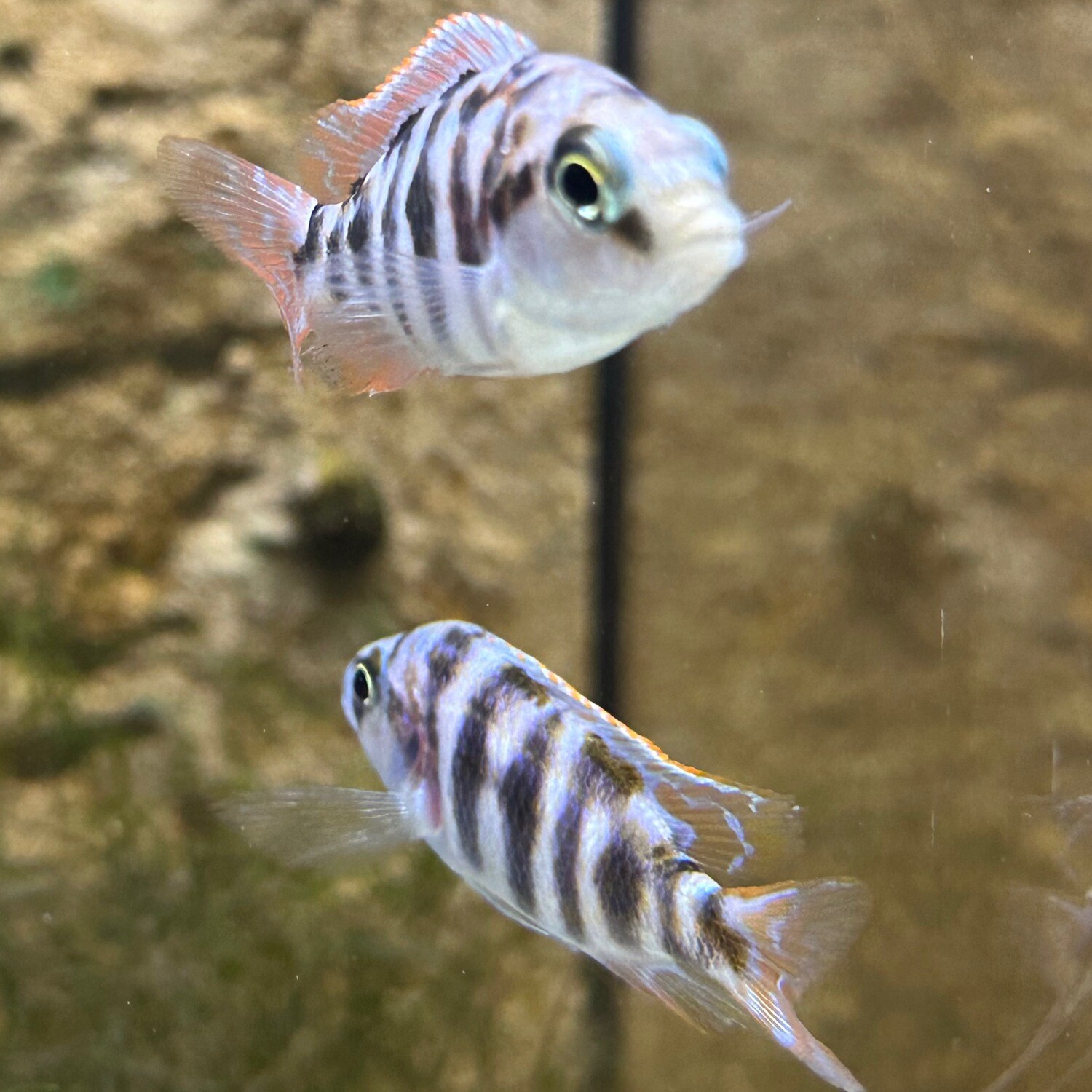Super VC-10 hap. cichlid
1. Tank Size: Super VC-10 Haps require a spacious tank with a minimum capacity of 75 gallons. They are active swimmers, so provide ample swimming space. If keeping a group or breeding pair, increase the tank size accordingly.
2. Water Conditions: Maintain a temperature between 76°F and 82°F (24°C - 28°C) and a pH level between 7.8 and 8.6. These cichlids flourish in hard, alkaline water. Ensure good water quality by using a reliable filtration system and performing regular water changes.
3. Tank Setup: Create a habitat that mimics their natural environment. Decorate the tank with plenty of rocks, caves, and hiding spots. Use sandy substrate to replicate their native sandy lake bottoms and provide ample open swimming areas.
4. Diet: Super VC-10 Haps are omnivorous and have a preference for protein-rich foods. Offer them a varied diet that includes high-quality cichlid pellets, supplemented with live or frozen foods like brine shrimp, bloodworms, and krill. Include some vegetable matter, such as spirulina flakes or blanched vegetables, to diversify their diet.
5. Tankmates: Super VC-10 Haps are generally peaceful but can be slightly territorial. They can coexist with other similarly sized African cichlids from Lake Malawi, provided there is sufficient space and hiding spots. Avoid housing them with overly aggressive species.
6. Behavior and Compatibility: Super VC-10 Haps are generally peaceful, but males can become more territorial during spawning. Provide plenty of hiding spots and multiple females if keeping a breeding group to help disperse aggression. Avoid mixing them with small, delicate fish that could be seen as potential snacks.
7. Breeding: Super VC-10 Haps are mouthbrooders. Provide them with caves or flat rocks for spawning sites. After spawning, the female will take the eggs into her mouth, and both parents may exhibit varying degrees of aggression towards tankmates. Separate them into a breeding tank if you want to raise the fry.
8. Maintenance: Regularly check water parameters and perform water changes accordingly. Vacuum the substrate, clean the filter, and remove any uneaten food or waste to maintain good water quality.
Remember to observe your Super VC-10 Haplochromis Cichlid regularly to ensure they are healthy and thriving.

